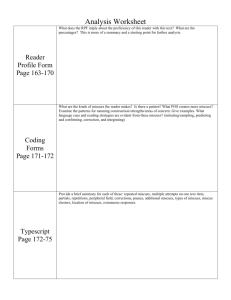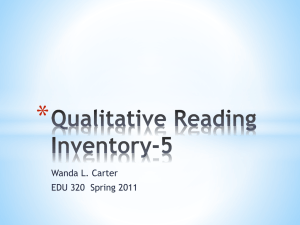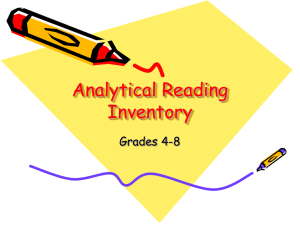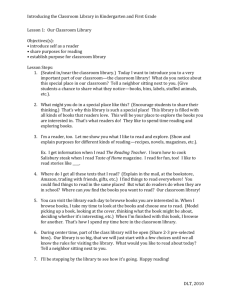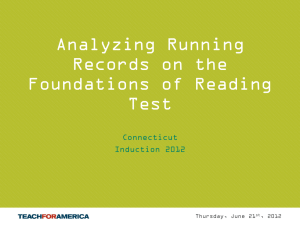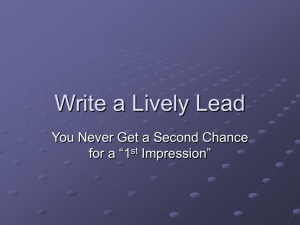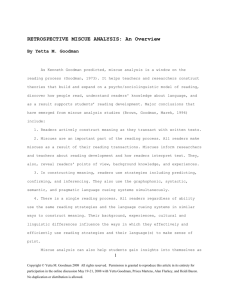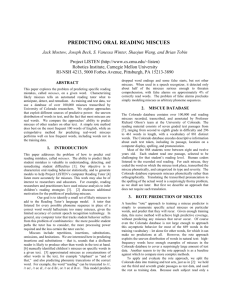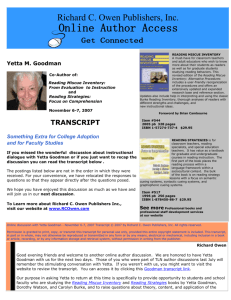Parents as Strategic Reading Partners
advertisement
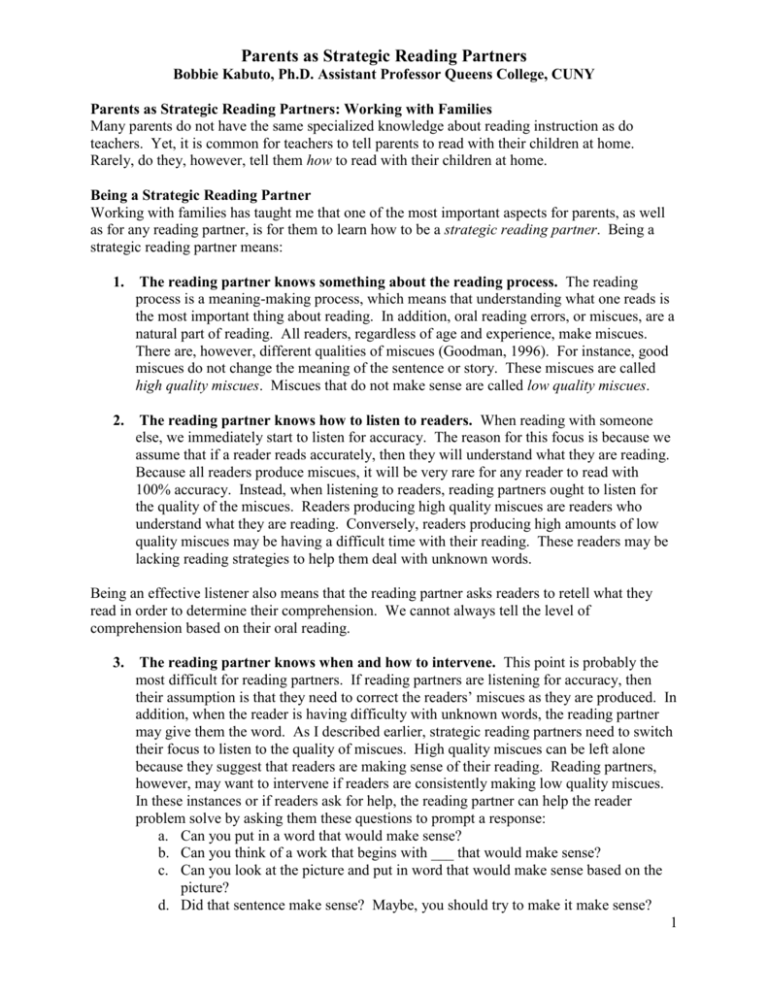
Parents as Strategic Reading Partners Bobbie Kabuto, Ph.D. Assistant Professor Queens College, CUNY Parents as Strategic Reading Partners: Working with Families Many parents do not have the same specialized knowledge about reading instruction as do teachers. Yet, it is common for teachers to tell parents to read with their children at home. Rarely, do they, however, tell them how to read with their children at home. Being a Strategic Reading Partner Working with families has taught me that one of the most important aspects for parents, as well as for any reading partner, is for them to learn how to be a strategic reading partner. Being a strategic reading partner means: 1. The reading partner knows something about the reading process. The reading process is a meaning-making process, which means that understanding what one reads is the most important thing about reading. In addition, oral reading errors, or miscues, are a natural part of reading. All readers, regardless of age and experience, make miscues. There are, however, different qualities of miscues (Goodman, 1996). For instance, good miscues do not change the meaning of the sentence or story. These miscues are called high quality miscues. Miscues that do not make sense are called low quality miscues. 2. The reading partner knows how to listen to readers. When reading with someone else, we immediately start to listen for accuracy. The reason for this focus is because we assume that if a reader reads accurately, then they will understand what they are reading. Because all readers produce miscues, it will be very rare for any reader to read with 100% accuracy. Instead, when listening to readers, reading partners ought to listen for the quality of the miscues. Readers producing high quality miscues are readers who understand what they are reading. Conversely, readers producing high amounts of low quality miscues may be having a difficult time with their reading. These readers may be lacking reading strategies to help them deal with unknown words. Being an effective listener also means that the reading partner asks readers to retell what they read in order to determine their comprehension. We cannot always tell the level of comprehension based on their oral reading. 3. The reading partner knows when and how to intervene. This point is probably the most difficult for reading partners. If reading partners are listening for accuracy, then their assumption is that they need to correct the readers’ miscues as they are produced. In addition, when the reader is having difficulty with unknown words, the reading partner may give them the word. As I described earlier, strategic reading partners need to switch their focus to listen to the quality of miscues. High quality miscues can be left alone because they suggest that readers are making sense of their reading. Reading partners, however, may want to intervene if readers are consistently making low quality miscues. In these instances or if readers ask for help, the reading partner can help the reader problem solve by asking them these questions to prompt a response: a. Can you put in a word that would make sense? b. Can you think of a work that begins with ___ that would make sense? c. Can you look at the picture and put in word that would make sense based on the picture? d. Did that sentence make sense? Maybe, you should try to make it make sense? 1 Reading Scenarios Reading Scenario #1 Emily, the reader described above, read the sentence, “‘What about me?’ asked Ollie” (Schachner, 2002, p. 32) as “‘What about me?’ said Ollie”. Emily read said instead of asked. A strategic reading partner would… Recognize that Emily produced a good, high quality miscue. Emily substituted one word for another word, but her substituted word makes sense in the sentence. It is irrelevant that the words do not look alike because of the miscue’s quality. In fact, when Emily was asked to reflect on this sentence, she did not realize that she made the miscue. Because the miscue made sense, it is appropriate to not interrupt the reader and to allow her to continue her reading. Reading Scenario #2 Nina, a fourth grade reader read the following sentence, “This is the garden that we will grow” (Holub, 2001, p.2) as “It is the great that we will grow.” Nina made two miscues. She substituted it for this and great for grow. Nina’s miscues are low quality. A strategic reading partner would… Recognize that Nina produced a sentence that did not make sense. The reading partner may want to assist Nina in correcting her sentence. Instead of giving Nina the correct responses, the reader partner could first ask Nina, “Did that make sense?” If Nina says yes, then the reading partner could read the sentence back as Nina read it. Sometimes this is helpful because when the reader hears their sentence back from someone else they will recognize that it does not make sense. If Nina says no that it did not make sense, then the reading partner could ask Nina to reread the sentence and prompt her to: 1. Try to use some letter sounds. 2. Look at the picture. 3. Put in a word that would make better sense. In Conclusion Strategic reading partners are just that “strategic.” They have a sense of where they want to take the reader when they read with them. Because the most important thing about reading is comprehension and making sense, this should be the initial goal for strategic reading partners. Furthermore, being “strategic” also means being selective. If a reading partner addresses every miscue, especially when reading with struggling readers, then the reader, and possibly the reading partner, may be overwhelmed. In all, strategic reading partners should focus on the miscues that interfere with meaning, but at the same time, not every miscue needs to be addressed if there are a large amount of them. References Goodman, K. (1996). On reading. Portsmouth: Heinemann. Holub, J. (2001). The garden that we grew. New York: Puffin. Kabuto, B. (2010). Code-switching during parent-child reading interactions: Taking multiple theoretical perspectives. Journal of Early Childhood Literacy, 10(2), 131-157. Schachner, J. (2002). Yo, Vikings!. New York: Penguin Putnam. Shaw, C. (1947). It looked like spilt milk. New York: Harper Collins. 2
